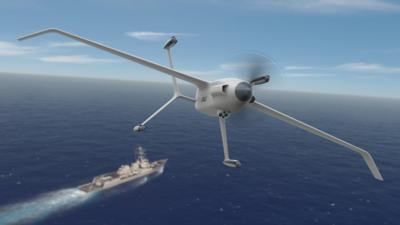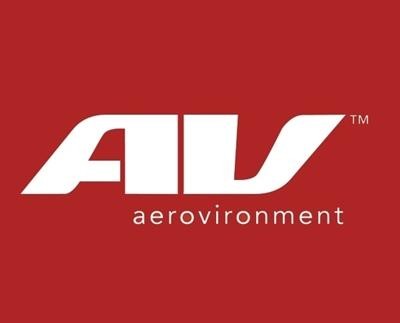Fri, May 31, 2024
ANCILLARY Program Gets New Contender
AeroVironmen'ts Group 3 Wildcat is now being honed as one of the Defense Advanced Research Projects Agency's inscrutably designated 'AdvaNced airCraft Infrastructure-Less Launch And RecoverY' program.

In typical DARPA try hard fashion, the program is probably more 'backronym' than 'acronym', but ANCILLARY is easier to remember so it makes sense why it stuck. AeroVironment is hoping its little Wildcat will be the most promising of the bunch, since it offers the right blend of endurance, payload, VTOL and landing performance while managing to host enhanced autonomy.
AeroVironment knows that the hardware is only part of what makes a successful UAS these days, so they promise the inclusion of their SPOTR-Edge machine learning visual system as the cornerstone of the Wildcat's performance. Their work on Group 1 to 3 UAVs over millions of flight hours with the JUMP 20, Puma AE, and Raven systems has provided a base of understanding that AeroVironment hopes will be the decisive edge against the competition.

The Wildcat isn't just an off-the-shelf model from the AeroVironment attic, either. It has been designed specifically to meet DARPA's ANCILLARY tender, offering a 450 nm radius, 12-hour endurance, and 60-lb payload. It even improves on the minimum sea state landing requirements, allowing them to recover it even in poorer weather than they expected the final product to handle.
“We have prioritized controllability to ensure Wildcat meets the ‘anytime, anywhere’ goal of DARPA’s ANCILLARY program,” said AeroVironment's Vice President of MacCready Works, Chris Fisher. “Wildcat leans on autonomy to reduce operational burdens while enabling safe, infrastructure-less launch and recovery in challenging conditions from a range of Navy ships. Our solutions are specifically crafted for the operator and Wildcat is no exception. AV has a strong history of seamlessly integrating our systems into a soldier’s daily operations and we look forward to further developing this design in partnership with DARPA and the Office of Naval Research for the ANCILLARY program."
More News
He Attempted To Restart The Engine Three Times. On The Third Restart Attempt, He Noticed That Flames Were Coming Out From The Right Wing Near The Fuel Cap Analysis: The pilot repor>[...]
Make Sure You NEVER Miss A New Story From Aero-News Network Do you ever feel like you never see posts from a certain person or page on Facebook or Instagram? Here’s how you c>[...]
From 2009 (YouTube Edition): Leading Air Show Performers Give Their Best Advice for Newcomers On December 6th through December 9th, the Paris Las Vegas Hotel hosted over 1,500 air >[...]
Aero Linx: NASA ASRS ASRS captures confidential reports, analyzes the resulting aviation safety data, and disseminates vital information to the aviation community. The ASRS is an i>[...]
“For our inaugural Pylon Racing Seminar in Roswell, we were thrilled to certify 60 pilots across our six closed-course pylon race classes. Not only did this year’s PRS >[...]
 NTSB Final Report: Rutan Long-EZ
NTSB Final Report: Rutan Long-EZ ANN FAQ: Turn On Post Notifications
ANN FAQ: Turn On Post Notifications Classic Aero-TV: ICAS Perspectives - Advice for New Air Show Performers
Classic Aero-TV: ICAS Perspectives - Advice for New Air Show Performers ANN's Daily Aero-Linx (06.28.25)
ANN's Daily Aero-Linx (06.28.25) Aero-News: Quote of the Day (06.28.25)
Aero-News: Quote of the Day (06.28.25)




